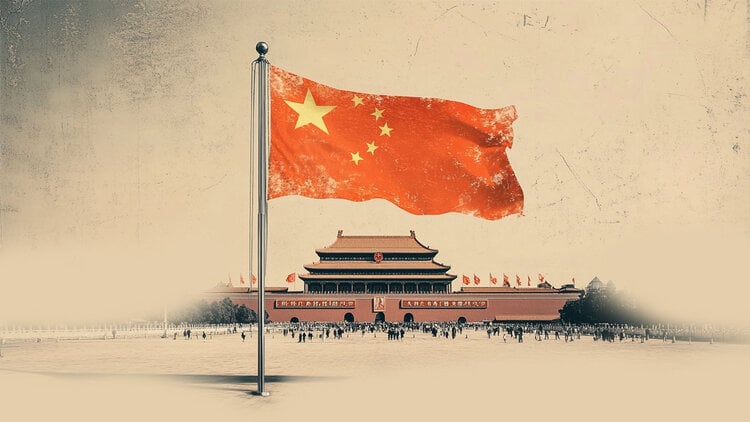The president of Ecuador, Daniel Noboa, detailed plans for two new maximum security prisons this Thursday (11).
The measure is part of his promise to fight drug gangs, which his government blames for a wave of violence and for almost 180 prison staff held hostage by inmates.
There has been a dramatic increase in violence in the country this week, including the attack on a television network, explosions in several cities and the kidnapping of police officers. These actions appear to be a response to Noboa's plans to address the security crisis.
Noboa declared a state of emergency for 60 days, sending the military into the streets and classifying 22 gangs as terrorist groups. On Wednesday (10), he said he expected help from the United States within a few days.
US State Department spokesman Vedant Patel reiterated on Thursday (11) that the United States is ready to provide assistance, but declined to specify what type of aid it is prepared to offer.
Noboa promised, among other things, to keep gang leaders detained in the new prisons.
Find out more about the new prisons
The facilities that will be built in the provinces of Pastaza and Santa Elena will have space for 736 prisoners and will be divided between high security, maximum security and supermaximum security, Noboa's office said in a statement.
The construction of prisons “is the beginning of an urgent recovery of the penitentiary system”, highlighted the head of state in a video, adding that tougher laws, honest judges and the possibility of extraditing wanted criminals are also needed.
The video released by the government shows a model of one of the new prisons, with six octagonal buildings surrounded by a high wall and multiple fences.
The facilities will block cellphone and satellite signals, generate their own electricity, treat their own water and employ guards whose faces will be covered to ensure anonymity, the government said.
“The unrest in prisons and on the streets is a clear demonstration of the fear that criminals feel about the security policies we are implementing. We will not allow groups of terrorists to hold this country”, warned Noboa.
Ecuador borders Colombia and Peru, cocaine-producing countries, and has become an important drug shipping point. The country has around 2,600 prison guards nationally to manage 32,000 prisoners, not including youth detention centers.
Noboa, 36, took office in November and is supported by the National Assembly, which voted unanimously on Wednesday night to support his efforts against the security crisis.
Prison guards held hostage
Little information has been released by the authorities about the situation of 158 prison guards and 20 administrative employees taken hostage since Monday (8) in at least seven prisons.
“The situation is very worrying. We still don't know what the internal conditions are. No one enters, no one leaves. We don’t have exact information”, highlighted Carlos Ordonez, vice-president of the prison workers’ association.
Ordonez also said that the military has taken over management of the places where there are hostages.
Videos showing prison staff being subjected to extreme violence, including shooting and hanging, circulated on social media, although the commander of the Armed Forces, Rear Admiral Jaime Vela, said on Wednesday (10) that no hostages were killed.
Reuters was unable to verify the authenticity of the videos.
“For now, we understand and hope that they are not our colleagues in the videos. We think everyone is still alive,” Ordonez said, adding that his group filed a habeas corpus petition to try to pressure the government to do more.
“We asked for the release of my colleagues and then better working conditions,” Ordonez said.
The SNAI prison agency highlighted in a statement this Thursday (11) that there were disturbances during the night in two prisons and the escape of three inmates from another.
Operations to free the hostages are ongoing, it added.
Operations against crime
Ecuador's neighboring countries intensified border controls this week, while the Ecuadorian military carried out operations and weapons seizures across the country.
Vela said on Wednesday that 329 people, mostly from gangs such as Los Choneros, Los Lobos and Los Tiguerones, had been detained since the president declared a state of emergency.
Additionally, Quito police conducted a controlled detonation of an explosive near a highway bridge on Thursday, as well as arrests for alleged terrorism and drug-related crimes.
Police had previously reported that nine officers were kidnapped earlier this week, but it was unclear how many were still in captivity on Thursday.
The streets of Quito and Guayaquil remain emptier than normal, with in-person classes suspended and many people working from home.
Invasion of the television network
Images of armed men taking control of a TV studio at public broadcaster TC on Tuesday afternoon (9) were broadcast live for around 20 minutes and made headlines around the world.
Alina Manrique, a 39-year-old journalist who was among the hostages, said she feared being killed and imagined never seeing her children again.
Being rescued by the police after the armed men surrendered was like being “reborn”, she reported.
“Their intention is clear to me, so that the whole world can see that they were able to do this at two in the afternoon, to rob a television channel and bring 50 journalists, a city, a country to their knees”, pondered Manrique.
José Luis Calderon, a colleague of Manrique, told Reuters on Wednesday (10) that the armed men said several times that they were part of La Firma, a gang associated with Los Choneros, which is one of the criminal groups identified as a terrorist organization by Noboa.
Source: CNN Brasil
Bruce Belcher is a seasoned author with over 5 years of experience in world news. He writes for online news websites and provides in-depth analysis on the world stock market. Bruce is known for his insightful perspectives and commitment to keeping the public informed.







